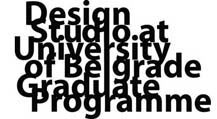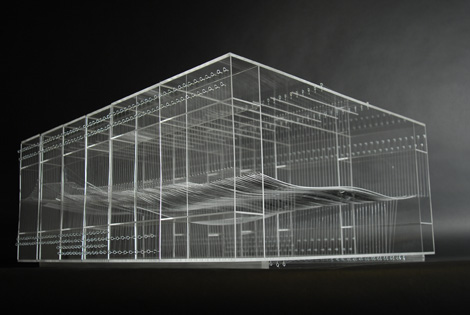Sala 254, sreda 26. decembar, 19:15h, U okviru predmeta M6.2 Seminar „Nakon geometrije: tehnologija i ekologija u arhitekturi“, arh. Milena Stopić (UNStudio) će održati predavanje sa nazivom “Arhitektura horizontalnog prostranstva: nova tla u arhitekturi”.
Arhitektura horizontalnog prostranstva istražuje pitanje tla u savremenom arhitektonskom dizajnu kroz tri primera: projekat Master teze za memorijal u Beogradu; projekat zgrade novog konektora na aerodromu u Briselu, kao i Ekspo-paviljona u gradu Cingtao u Kini. Predavanje će pružiti u uvid u sklop formalnih strategija, modela dizajna i konceptualnih pravaca koji preispituju tradicionalni pojam odnosa arhitekture i tla. TLO + VAZDUH: Vazdušni Memorijal (Milena Stopić, Master teza, Univerzitet Prinston) namenjen je žrtvama logora Staro Sajmište i otelotvoruje stanje progonstva od zemlje i od sigurnosti prirodne vazdušne sredine. TLO + MESTO: Konektor Aerodroma u Briselu (UNStudio) je osmišljen kao jedinstvena koreografija uzajamnih odnosa i dešavanja, akumuliranih u prostoru u kome se velike grupe ljudi skupljaju i razilaze. Niz različitih atmosfera i raspoloženja daju prostoru poseban karakter, koji je analogan karakteru gradske sredine. TLO + PRIRODA: Cingtao Ekspo Hortikulture (UNStudio) eksperimentiše sa disciplinskim okvirima arhitekture, u nastojanju da redefiniše stroge odnose između prirodnog i izgrađenog u napredniji model dizajna.
Lecture: “Architecture Of The Horizontal Expanse : New Ground Conditions In Architecture”, Milena Stopić (UNStudio)
19:15h, December 26th, Room 254, Faculty of Architecture, University of Belgrade
part of the lecture series “After Geometry: Technology and Ecology in Architecture“ Graduate Programme, Module: Seminar M6.2 2012/13
Architecture of the Horizontal Expanse examines new ground conditions in contemporary architectural design through three projects: a memorial in Belgrade, Serbia, an airport connector in Brussels, Belgium and an Expo pavilion in Qingdao, China. Despite the obvious differences in their geographical settings, the projects offer insight into a set of new formal strategies, design models and lines of conceptual thought that re-examine traditional notions of architecture’s relationship to the ground and the land it politically belongs to. The three projects each address the ground condition in a particular way. GROUND + AIR: Air Memorial (Milena Stopic, Princeton University School of Architecture MArch Thesis) is a piece of commemorative architecture for the victims of the WWII Staro Sajmište Camp. The Memorial embodies the condition of banishment from the land and the banishment from a safe and natural air-envelope. The shared condition of human beings was no longer understood as related to the land which they occupy, but rather to the common environmental envelope in which they are together immersed. Therefore, the traditional political and symbolical importance of the ground in commemorative architecture is no longer sufficient and becomes overpowered by the concern for commemorating the air, or rather – the deprivation of air. GROUND + PLACE: The Brussels Airport Connector (UNStudio) encompasses a unique system of different qualities and relationships that accumulate in a place where high densities of people collect and disperse from. The series of moods within the Connector generate its distinctive character, complementary to the feeling of a city. By accommodating convergence of arriving/departing streams, changing movement intensities, shopping speeds, material and spatial qualities, we make a non-ground of short-term passing turn into a meaningful place of activity and excitement, giving a new identity to the Brussels Airport. GROUND + NATURE: The Qingdao Horticultural Expo Pavilion (UNStudio) experiments within the disciplinary boundaries of architecture to redefine the stringent relationships of the natural and the built into a much more fluent design model. The resulting composite has an immediate effect on its occupants, enabling uninterrupted communication across the landscape, inside and out of the buildings, on top of or below them, encouraging a coexistence of numerous values, cultures and customs. The architectural geometry is not only thought of as a reference to the local ground condition, but also a viewing device – a landscape that moves with us, creating a celebration of being in the changing green.



